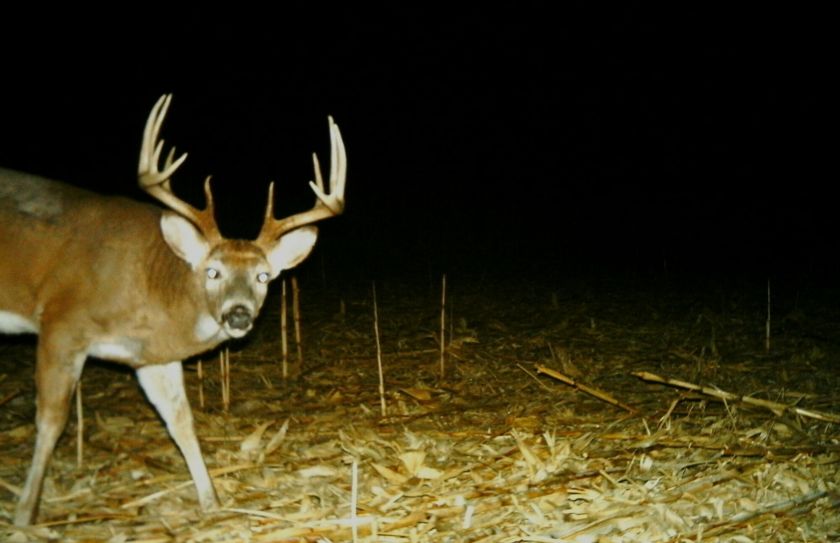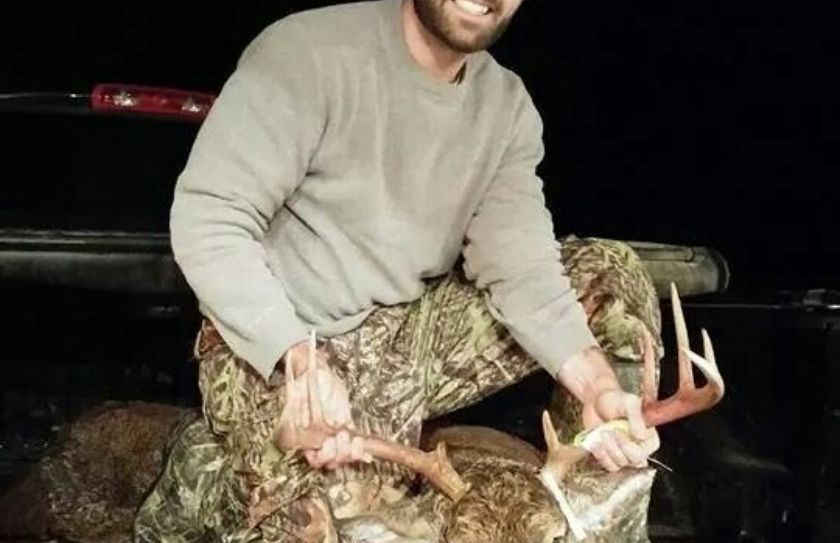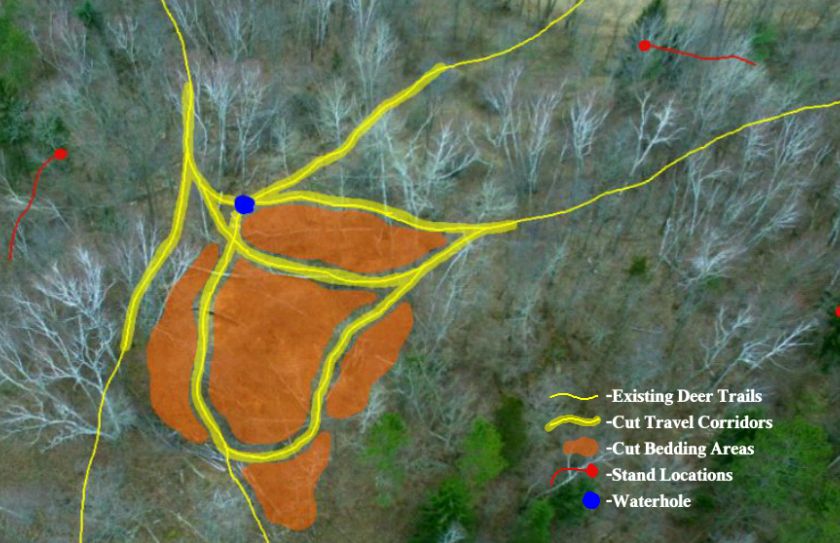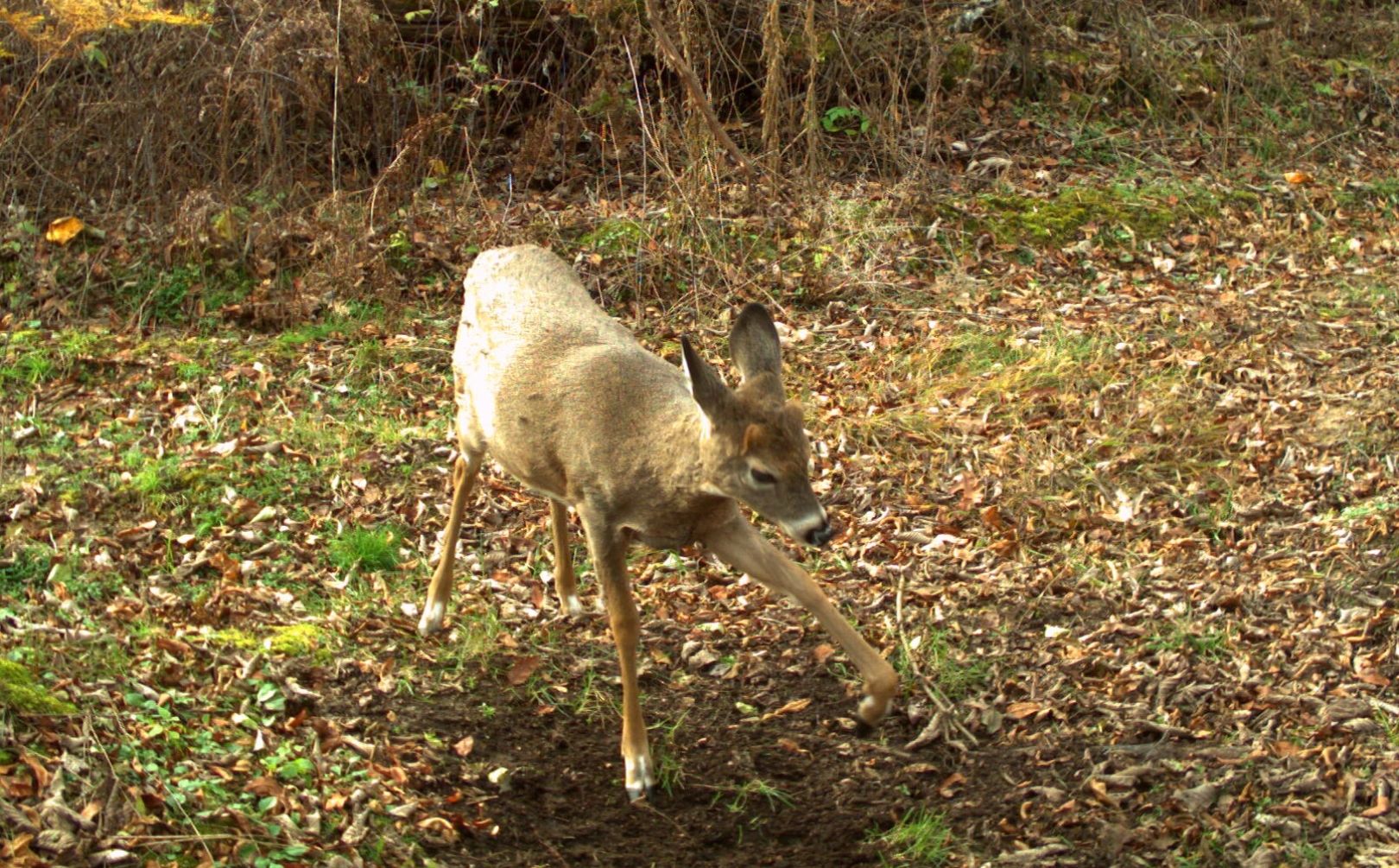
Creating a great whitetail parcel goes well beyond the holistic approach of multi diversity habitat creations. If your entire system of whitetail efforts are on point, you should demand and expect that outstanding deer habitat for big bucks and easy doe harvest, among other things, will be created. Results matter! A common misconception is that because you create great deer improvements, that you are automatically creating a great deer herd. High end deer results are not guaranteed purely by altruistic intentions. You only need to study the quality of the hunt for the deer on your land, to make sure that you are headed in the right direction.
Great Deer Habitat Equals Great Deer Hunting?
Deer hunting for big bucks, the antlers that follow and the entire big buck adventure are all a part of the process when great deer habitat is created. While this process is revered by many, it is also de-emphasized and even bastardized by others. I personally understand the negative position because on every online deer habitat page, big bucks seem to be a major focus, even to the extent of potentially turning "off" a portion of deer habitat junkies. Although the emphasis of giant bucks, easy hunting and antlers can be a bit over-bearing at times, those "necessary evils" (it would seem to some) are most likely the strongest two indications that your deer habitat efforts are actually doing more good, than harm. Just because you have created the perfect deer habitat improvements, does not mean that your hunting opportunities or even the local herd, are actually improved. It sounds good to say that they are, but great intentions that have been fully resourced by many hours and many dollars, can not be fully justified without results.
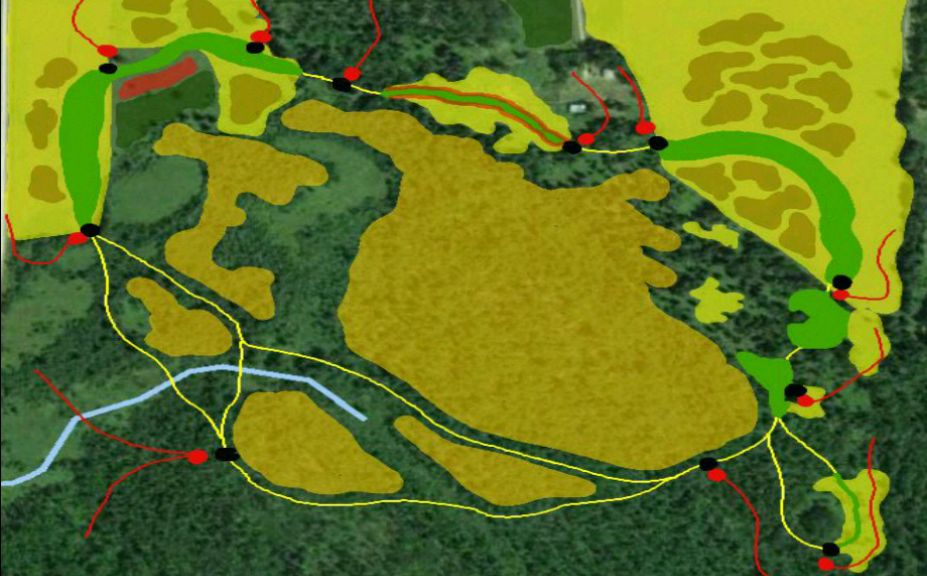
Green=Food Plots***Shaded Yellow=Switchgrass***Lite Tan=Wooded or Field Browse Pocket Management***Red=Stand Location and Access***Yellow Lines=Forestry Head Deer Travel Corridors***Shaded Red=Apple Tree Planting And Management
*Unless you create over 50% of your deer habitat to be free from hunter scent, sound or site, you have work to do! Random hunter access trails and stand locations that allow the local deer herd to pattern you, better than them, can kill your efforts. Also, habitat improvements located within your hunter access or downwind scent areas, should be eliminated at all costs. Great deer parcels are defined by the huntability of the land and not the quality of the habitat.
Big Buck Deer Habitat
When it comes to creating deer habitat for big bucks, the results are all relative. Every parcel has a buck age structure and sex ratio potential. The factors of neighboring influences, topographical extremes, hunter numbers and regional constraints, all combine to dictate your land's true potential. A 3.5 year old buck on one parcel, could be equal to a 4.5 year old on another, when it comes to the level of difficulty to attract, grow, hold and harvest. When it comes to creating quality deer habitat, your focus and work should be geared for creating a parcel that can produce the potential of buck age structure and sex ratios, for your land. That priority, is why so much emphasis on big bucks and big antlers, is justified. The lowest hole in the bucket for great deer habitats, is attaining your potential for producing and hunting big bucks.
If you create deer habitat that defines the daytime use of deer on your land, that allows you to get on and off your land without spooking deer and creates opportunities for you to harvest the oldest bucks in the neighborhood, than you truly have a system of habitat that works in combination to improve your herd and hunt. However, the opposite is actually a more realistic outcome!
If your deer habitat improvements increase the rate of nocturnal buck use on your land, promote deer-human encounters and have proven over time that your mature buck harvest opportunities have deminished, than join the crowd! Without the focus of actually how to attract, hold and successfully hunt the oldest bucks in the neighborhood on your land, you are likely doing more harm than good with the deer habitat that you create.
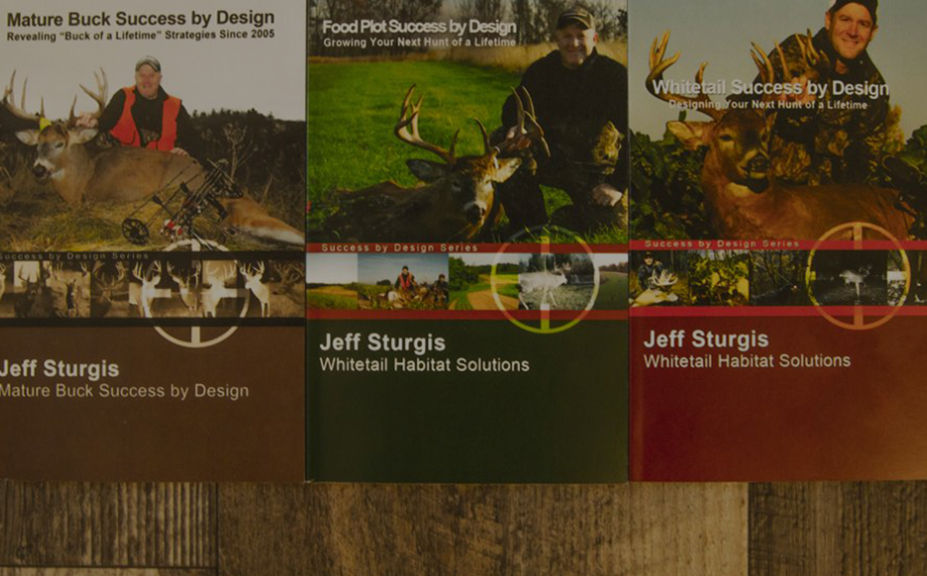
*Creating a quality whitetail parcel takes a lot more than money, time and good intentions. The potential of your land will only be realized when you learn how to complete your efforts within balance of your ability to move about your land as a predator to ambush and unsuspecting herd. For the first step in finding how to accomplish a quality whitetail system on your land, make sure to check out my Whitetail Success By Designbook series.
Attraction Managed Deer Habitat Improvements
The old-school method of deer habitat management was to walk a deer parcel and change every bit of habitat for the better. Improvement recommendations were often based more on efficiency of installation and attempting to improve every square inch of the habitat in some way, than creating a system of movement that complimented a high-end hunting approach. "Find a soil map to determine the best location for food plots on your land" advice, created thousands of great looking food plots in the wrong locations. Why? Because the level of the potential attraction for the habitat improvements, was not managed.
The worst thing that can be accomplished with deer habitat creations, is when a parcel or location on the parcel attracts the local deer herd, only to then be spooked by hunting pressure. The resulting pinball effect of attract-repel-attract, when habitat improvements of cover, food, water and travel are located poorly, will result in several negative herd and hunting conditions:
1. Nocturnal Bucks
If you spook deer regularily on your land due to your improvements, you can expect the oldest bucks to live the furthest away from your borders. Bucks are not nocturnal, but when they have to travel a mile away from their daytime security cover to access your land, they sure do appear to be.
2. Excessive Doe Numbers
Doe family groups are home-bodies. Their home ranges are small and they can tolerate a lot of social and hunter stress before completely leaving their preferred habitat. The more attractive your habitat, the more does that you will attract to a point that you can actually create a land that only features the daytime bedding focus of does and fawns.
3. Random And Frequent Deer-Human Encounters
I love to see deer! However, I don't love to see them on the way to or from my stand locations. Unless your deer habitat improvements work in harmony to highly define the daily use of deer in specific locations, it can be nearly impossible to hunt your land without spooking the entire parcel. As the level of appropriately located deer habitat improvements increases, the number of deer-human encounters descreases.
4. Poor Buck Age Structure And Sex Ratios
Poorly located deer habitat improvements actually reduce buck age structures and sex ratios. Big Bucks are simply the result of a Great Plan. It is very rare that a parcel contains one without the other!
The greater the level of attraction on your land, the greater your responsibility to manage that level of attraction, so that you are not increasing the number of deer that you spook. I have visited dozens of parcels -possibly 100s- where the quality of the local herd and parcel hunting opportunities, were actually better prior to start of habitat improvement efforts. If your hunting practices do not match the level of attraction on your land, then habitat improvements should be altered or removed to allow you to balance your efforts. The attract-repel concern is very real when it comes to creating deer habitat that is too attractive for its own good.
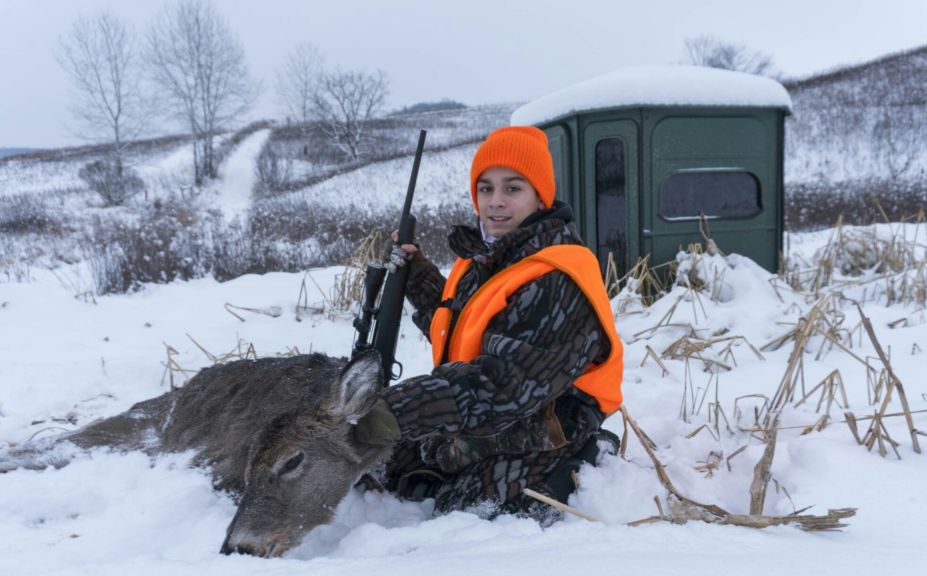
*The level of difficulty to harvest mature does on your land, nearly at will, is a direct reflection of how well your deer habitat efforts are doing.
Habitat For Easy Doe Harvest
If your deer habitat results produce quality big buck results, then you can expect to easily harvest the does on your land if and when needed. Mature bucks are much harder to attract, hold and harvest then mature does, and while an appropriate buck herd is a necessarly reflection of a quality deer habitat plan, that ingredient is truly the lowest hole in the deer management bucket. Mature does do the same thing every day, largely falling into a daytime bedding to afternoon feeding pattern, that is extremely predictable. In fact, that movement should be the basis for all quality deer habitat designs. The level of difficulty to harvest mature does on your land, nearly at will, is a direct reflection of how well your deer habitat efforts are doing.
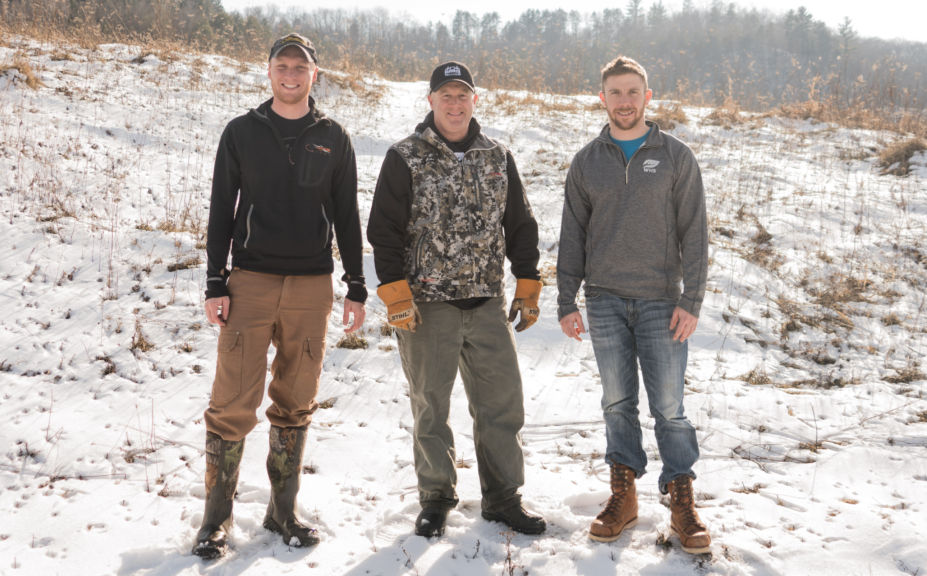
*The WHS team has the experience of designing over 600 parcels in 22 states, that forms the basis for every deer habitat plan or activity. To check out more about who we are and what we do, please visit Whitetail Habitat Solutions, LLC Services for YOU!
Conclusion
While at times the appearance of too much focus is placed on creating deer habitat to attract and hold big bucks, that appearance should probably be more accurately understood before de-emphasizing its overwhelming value. Big bucks and easy doe harvest, whether you like it or not, are both strong indications that your deer habitat, herd and hunting efforts are being rewarded. On the otherhand, pretty food plots, cool waterholes and quality deer bedding areas are merely a reflection of a lot of hard work. Hard work is not necessarily a guarantee of a job well done, or that the herd and hunting conditions have even improved. If you are tired of all of the big buck talk I can sympathize, to some extent. As long as your deer habitat efforts are attaining your land's buck age structure and sex ratio potential -while still having fun of course- then just ignore all the talk while knowing that you are doing a great job! However if you are experiencing nocturnal buck movements, difficult doe harvest, poor daytime buck age structures, frequent deer-human encounters and excessive antlerless numbers - maybe it is time to listen.
